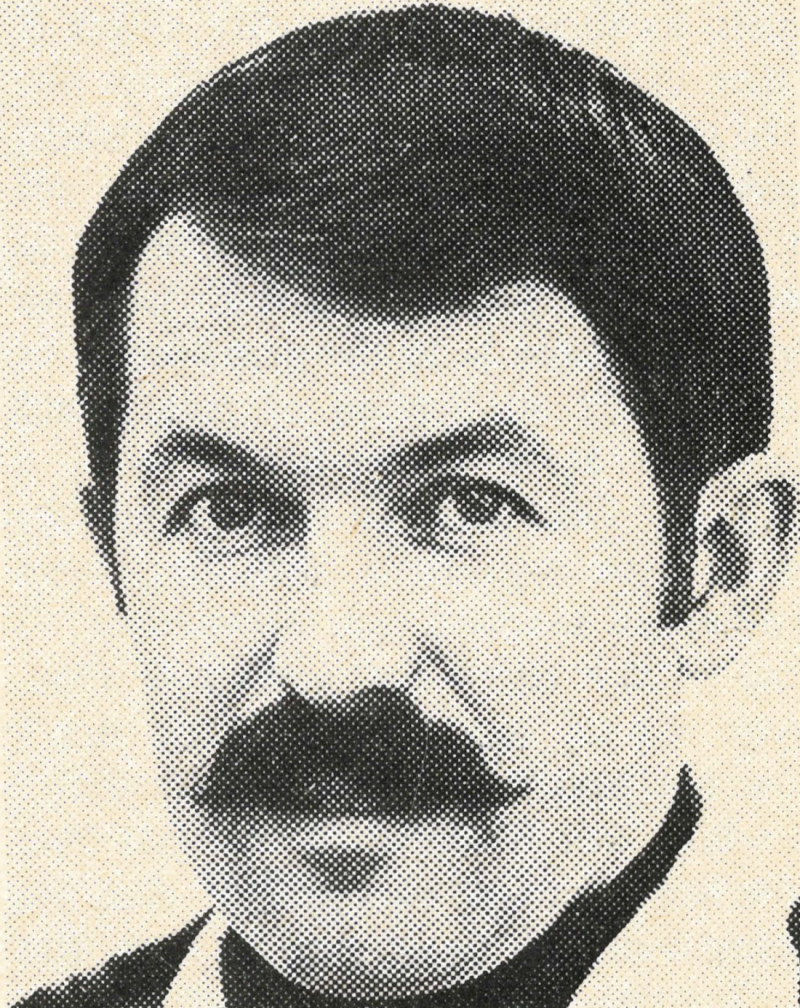“Beothuck Poems” by Sid Stephen

True history: is what lives
within the mind,
is
of the tongue,
is
seen by the mind’s I
Surely this notion speaks to the motive, and the problem, of both writers.
Sid Stephen has made my “mind’s I” see again what Such made it see earlier: the great loss we all suffer with the passing into extinction of the Beothucks, the great guilt we must all continue to feel. True history “is” and Stephen’s articulate “tongue” makes it be. Hardly ever does he falter here.
His four-part serial poem begins with a view of the main island of Newfoundland before and just as the Beothucks arrive:
In the beginning
there was only the sea
or to be
exact
there was the sea
Island:
changing sea sons
carried seed-like
in black boats circled
through currents
circled, settled here
ringing the island
as if it were a bell.
And, part by part, he recreates his “true history” of Newfoundland: (I) the Beothucks inhabiting the island alone, fishing, building, worshipping, in complete harmony with the place; (II) the coming of the whites, the growth of their intolerance toward and annihilation of the Beothucks; (III) the capture of Shawnadithit, the last Beothuck, and her “civilized” life in St. John’s until her death in 1829; and finally (IV) the poet’s own trip to Newfoundland, which he finds now subdued by buses, trains, and the Cadillacs of visitors from Toronto. The Beothucks linger only in the few dry fragments on display in the Provincial Museum, some “bone pins” and the ochre-stained body of a child and his doll, and in the key-chain plastic Indians, made in Taiwan and sold for a dollar in the bus station.
This arrangement of the four parts very effectively serves Stephen’s intentions. The reader is quickly attracted to the Beothucks and their way of living, and his horror grows steadily as he experiences their progressive eradication. The shift from the emotional climax of Shawnadithit’s death to the poet’s experience among the relatively superficial aspects of modern Newfoundland creates a strong ironic tension which heightens the reader’s feeling of the great wastage and prepares him for Stephen’s final lament over the passing of the Beothuck people, for
it is men
who place an
I
in island.
For the most part, Stephen’s language, lining, and spacing are entirely appropriate, and his figures fresh and startling. The following lines from “Seafield/Harvest” give a good indication of his style:
the seafields: shifting
rows of waves sucking
the rivers out of the land,
full of fish sent
arcing in half moons,
alive, blood-
red as the earth
the water sunrise
red with blood and life.
These lines accomplish much and do so skillfully. The kenning-like “seafields” itself establishes the closeness of the people and the sea, the importance of the sea for their harvest. The image of “waves sucking/the rivers out of the land” emphasizes the interrelationship between the land and the sea, the importance of both to the Beothucks, and the unified view they have toward everything in their life, a view that is supported by the remaining lines. The pun on “sent” gives us both the casually worshipful attitude of the people and a very real quality of the fish. It also illustrates another aspect of Stephen’s poetry, the importance of sound, and this, too, is borne out by the alliteration and assonance of the rest of the lines. The isolation of “alive, blood-” and the delayed endocentric “red” serve both to emphasize the kinship felt by the Indians toward all living things, even the fish they harvest, and to accentuate the color of the leaping fish, caught in the red of the sunrise. Even the repetition of “red” suggests its importance to the Beothuck people, shown in their linking of blood with the sun and with the ochre powder used on their bodies.
Stephen’s poems tend to be both descriptive and reflective, and when they are primarily reflective, his language becomes more abstract, although still apt. The following lines suggest the Beothucks’ lack of a concept of personal ownership and that their innocent borrowing may have been the initial cause of the whites’ intolerance:
The step between trust
and disaster
can’t be seen
when it is taken, is only
visible
when viewed through the glass
of the future. A red hand
touched a white man’s
hammer or awl,
the resulting blood
stains the roots of tolerance,
which die
and are washed out to sea.
But even these abstractions are nicely tied down to concrete images finally.
Although the lines given above suggest the initial reason for intolerance, Stephen goes on in “White Settlements” to study a more general reason for the whites’ brutal treatment of the Indians:
Alone, unknowing: cold sparks
of fear of sickness, injury, of
indians and thunderstorms,
of madness and devils and the
dark endless woods
are struck
in dry white minds to feed
communities of panic,
the paranoia of
civilization
becomes rooted in the land
like a myth.
The Beothucks become the object of all the insecurities felt by white settlers who cannot live in a wholesome relationship with the place.
Beothuck Poems is a remarkably evocative study of things gone wrong. It gives the Beothuck people their “true history” and because it “lives” so acutely within our minds, we must feel accused and saddened. We must observe the display of Beothuck relics in St. John’s in a new and uncomfortable light.
William Latta teaches English at the University of Lethbridge. He has published two books of poetry, Summer’s Bright Blood (Thistledown, 1977) and Drifting Into grey (Four Humours Press, 1977).

